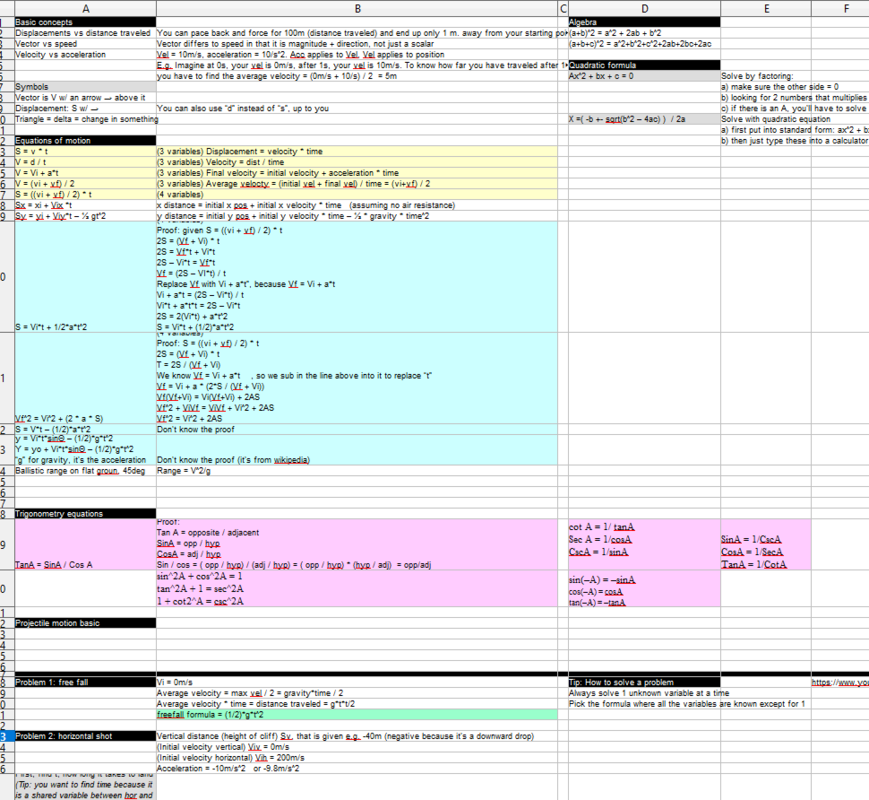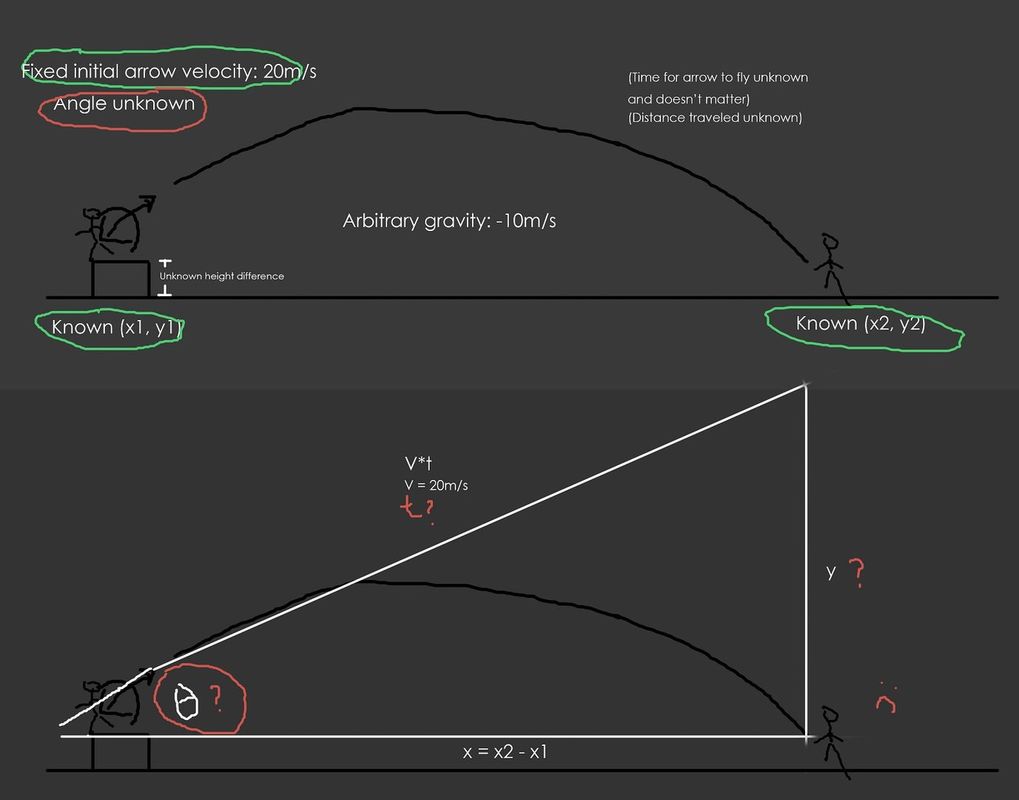While I was searching the topic "find the angle required to shoot a projectile towards a known position with a predetermined initial velocity", I came across this equation:
 (https://en.wikipedia.org/wiki/Projectile_motion#Angle_required_to_hit_coordinate_.28x.2Cy.29)
(https://en.wikipedia.org/wiki/Projectile_motion#Angle_required_to_hit_coordinate_.28x.2Cy.29)
I'd like to try to understand this equation a bit before put it in code.
Does this equation has a name that I can Google? I poked at some Physics videos on Khan Academy with no luck
-------EDIT: Conclusion-------
Good resources on trying to understand this formula:
https://blog.forrestthewoods.com/solving-ballistic-trajectories-b0165523348c
However, if you have a lot of trouble following the above tutorials, because you didn't study math and not a real programmer like me, then my advice is to just accept the formula and don't question it too much...
The formula translates into something like this: Angle = atan(((v*v) + sqrt(v*v*v*v) – g*(g*x*x+2*y*v*v))) / (g*x) so just sub in the values and get the result you need
yeah I was trying to brush up on HS maths and took a lot of notes, have a look if you're a hardstuck noob like me and really need some help







